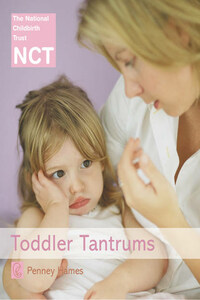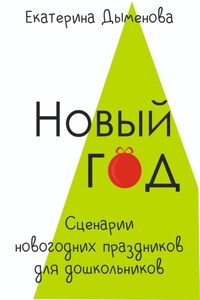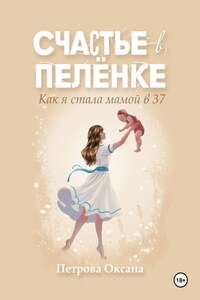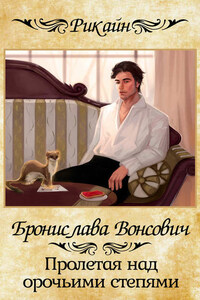Thorsons/National Childbirth Trust Publishing
Thorsons is an imprint of HarperCollinsPublishers Ltd. 1 London Bridge Street London SE1 9GF
www.harpercollins.co.uk
First published in collaboration with National Childbirth Trust Publishing 2000 This revised edition published 2002
Copyright © NCT Publishing 2000, 2002
Original photography: Anne Green-Armytage, © 2002 NCT Publishing Additional photography: Michael Bassett here, here and George Williams here
Penney Hames asserts the moral right to be identified as the author of this work
A catalogue record of this book is available from the British Library
Some images were unavailable for the electronic edition.
All rights reserved under International and Pan-American Copyright Conventions. By payment of the required fees, you have been granted the nonexclusive, nontransferable right to access and read the text of this ebook on-screen. No part of this text may be reproduced, transmitted, downloaded, decompiled, reverse engineered, or stored in or introduced into any information storage and retrieval system, in any form or by any means, whether electronic or mechanical, now known or hereinafter invented, without the express written permission of HarperCollins ebooks
HarperCollinsPublishers has made every reasonable effort to ensure that any picture content and written content in this ebook has been included or removed in accordance with the contractual and technological constraints in operation at the time of publication
Source ISBN: 9780722539798
Ebook Edition © AUGUST 2016 ISBN: 9780007388509 Version: 2016-09-02
âTo laugh often and much; to win the respect of intelligent people and the affection of children; to earn the appreciation of honest critics and endure the betrayal of false friends; to appreciate beauty; to find the best in others; to leave the world a bit better, whether by a healthy child, a garden, or a redeemed social condition; to know even one life has breathed easier because you have lived. This is to have succeeded.â
Ralph Waldo Emerson
Title Page
Copyright
Dedication
Epigraph
Introduction
1 What is a Tantrum?
2 How to Have Fewer Tantrums
3 How to Head Off a Tantrum
4 Tantrum Hotspots
5 How to Handle a Tantrum
6 How to Cope with the Way You Feel
7 Love and Limits for Everyone
8 How to Help Your Toddler Grow Up
9 Beyond Toddlers
Index
Acknowledgements
About the Author
Good Books and Other Resources
About the National Childbirth Trust
About the Publisher
A few days ago, I finally looked squarely at something that had been loitering around the edges of my mind for a very long time â maybe since I was a toddler. Why, I wondered, did I find the relationships between parents and children â particularly small children and their new and largely wobbly parents â so endlessly fascinating?
I think itâs because I recognize in the toddler â parent relationship a stronger thread of the same uncertainty and repositioning that has woven through my own relationships, not just with my own children, but with my parents and my sisters too.
Toddlers are people in the making and the parents of toddlers are, at the same time, parents in the making. The two processes are irrevocably entwined. New parents with a baby are rapidly learning the basics, but not until they hit toddlerhood do most parents seriously begin to doubt their parenting ability. Itâs an unsettling time, but this questioning has its virtues. Itâs not until you question who you are that you can grow up a little. Jostling with our toddlers for space in the family may feel chaotic and uncomfortable, but it gives us the chance to redefine and to deepen our relationship with them and to come to understand ourselves better in the process.
But we donât just create ourselves as parents through our relationships with our toddlers. In becoming the sort of parents we feel good about being, we become more aware of the similarities and differences that we want to make between our own parents and ourselves. In the toddler years, we establish all sorts of limits and boundaries across three generations. And feeling comfortable with this takes time.
Many of the characteristics our toddlers develop and much of our own parenting styles seem to have their roots in the toddler years. In learning to say ânoâ firmly but lovingly, and feel good about it, we create space between ourselves and our toddlers that allows them room to flourish in their own way. And leaves us space to develop in ours.
Penney Hames
Three-year-old Ruby is standing in the supermarket, her arms locked in position like an angel in a Christmas play, out to her sides, her legs rigid, her eyes wide open and she is screaming. Itâs a high-pitched, ear-piercing, heart-stopping, agony of a scream. Her mother, hovering nearby, is trying to coax her to âcome on.â Everyone is looking, and even Rubyâs mumâs friend is shifting uneasily from foot to foot and whispering advice. In the end, Rubyâs mum becomes cross and yells at Ruby to âStop it immediately.â But Ruby goes on screaming, and by now her face is white, with a blue tinge. Rubyâs mum is embarrassed, angry and her bottom lip is quivering. Finally, she picks Ruby up (no mean feat given the rigidity of her daughterâs young body) and, abandoning her trolley full of defrosting fish fingers and ice cream in the middle of the aisle, carts her daughter, still screaming, from the supermarket and bundles her into her car seat. Rubyâs mum starts the engine and crunches into reverse and away, she doesnât know where, just away. After 15 minutes, Ruby finally stops screaming and falls asleep. Her mother is exhausted, confused and the first of many tears runs down her cheek.








